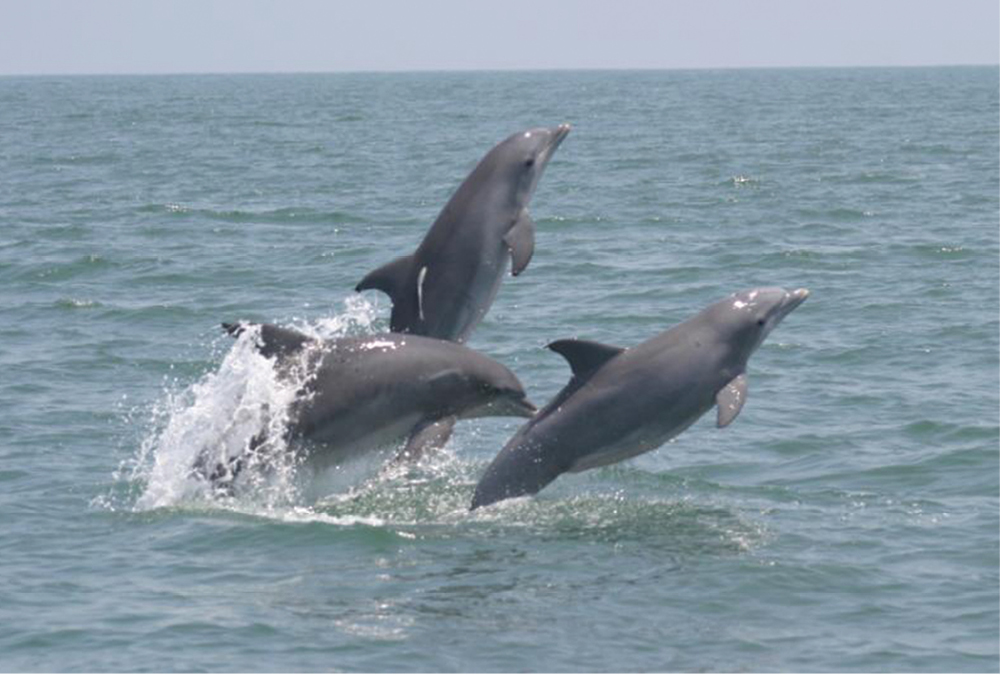Bottlenose dolphins along the East Coast get a new moniker
From Staff Reports
You may be familiar with common bottlenose dolphins, known by their scientific name, Tursiops truncatus. But did you know that there are three different ranging patterns for bottlenose dolphins off the East Coast? There are those that live in estuarine waters, those that migrate up and down the coastline, and those that live miles offshore.
Scientists have recently proposed that coastal and estuarine bottlenose dolphins along the East Coast are actually a different species than the offshore form of bottlenose dolphins. After a decade of research analyzing DNA samples and morphological data from tissue samples, skulls, and vertebral columns, it was revealed that coastal/estuarine dolphins evolved independently from their offshore counterparts and are more closely related to dolphins in the Gulf of Mexico and Caribbean.
National Oceanic and Atmospheric Administration (NOAA) scientist Dr. Ana Costa, Ph.D., was the lead author of the study. She used multiple lines of evidence in her work and in doing so worked with several other NOAA scientists. Costa worked closely with NOAA’s Southeast Fisheries Science Center, learning techniques from the genomics lab in Lafayette, LA, led by Dr.. Patricia Rosel.
With a new species, comes a new name! The scientific name, Tursiops erebennus, was chosen as this was originally used back in 1865 when the first description of a coastal bottlenose dolphin was published. The new common name is Tamanend’s bottlenose dolphin.
But what does this mean? Well, if you see a local bottlenose dolphin around the Lowcountry, you’re looking at Tursiops erebennus. But if you head far offshore and see one, you’re looking at the true Tursiops truncates.
This new taxonomic designation does not change the existing stock boundaries or protection status of the dolphins under the Marine Mammal Protection Act. Lauren Rust of the Lowcountry Marine Mammal Network says this also highlights how important it is to study dolphins (even the ones that die). Without the samples and skull specimens, this would’ve never been found.
This highlights the significance of our local estuarine dolphin population. Although not considered “endangered,” they are a strategic stock, meaning any small mortalities can have a large impact on the population.


